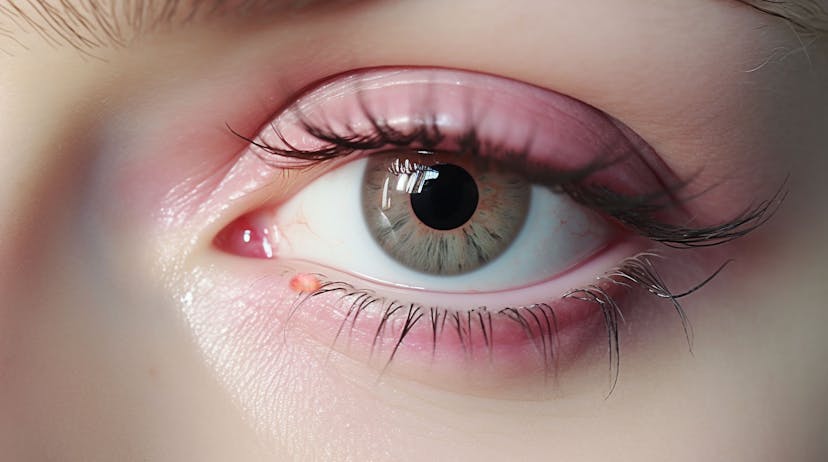
What Is Eyelid Surgery?
Eyelid surgery, medically known as blepharoplasty, is a cosmetic or functional surgical procedure that involves the removal or repositioning of excess skin, muscle, and sometimes fat from the eyelids. This surgery can be performed on both the upper and lower eyelids, addressing issues such as sagging skin, puffiness, and wrinkles. The primary goals of eyelid surgery include improving the appearance of the eyelids, rejuvenating the overall eye area, and, in some cases, enhancing vision by correcting functional problems caused by drooping eyelids.
Eyelid surgery is often chosen by individuals seeking to achieve a more youthful and refreshed look or those experiencing vision obstruction due to sagging or excess eyelid tissue. The procedure is typically performed by a qualified oculoplastic surgeon, a specialist with expertise in both ophthalmology and plastic surgery.
When Should I Consult A Surgeon About Eyelid Surgery?
You may consider consulting a surgeon about eyelid surgery, or blepharoplasty, under various circumstances. Here are common reasons individuals seek a consultation with an oculoplastic surgeon for eyelid surgery:
Drooping or Sagging Eyelids
If you notice significant drooping or sagging of the upper eyelids that affect your appearance or peripheral vision, a consultation can help determine if eyelid surgery is a suitable solution.
Puffy or Baggy Lower Eyelids
Excess fat or skin in the lower eyelids causing puffiness or bags may be a cosmetic concern. Eyelid surgery can address these issues and provide a more youthful appearance.

Functional Issues
Eyelid surgery is sometimes performed for functional reasons, such as correcting drooping eyelids that interfere with vision. If you experience vision impairment due to your eyelids, a consultation with an oculoplastic surgeon is essential.
Wrinkles and Fine Lines
If you are bothered by wrinkles, fine lines, or excess skin around your eyes, eyelid surgery can help rejuvenate the eye area and reduce the signs of ageing.
Cosmetic Goals
Individuals who are generally healthy and seek cosmetic improvement in the appearance of their eyelids may opt for eyelid surgery to achieve a more refreshed and youthful look.
Recovery from Trauma or Injury
Eyelid surgery can be considered for reconstructive purposes, addressing eyelid issues resulting from trauma, injury, or congenital conditions.
Medical Evaluation
If you have underlying medical conditions affecting your eyes or eyelids, a consultation with an oculoplastic surgeon can help determine if eyelid surgery is a viable option and ensure that your overall eye health is considered.
Realistic Expectations
A consultation allows you to discuss your goals and expectations for eyelid surgery with the surgeon. They can assess whether your expectations align with what can realistically be achieved through the procedure.
It's essential to choose a qualified and experienced oculoplastic surgeon for the consultation. During the appointment, the surgeon will assess your eye health, discuss your concerns, and provide personalised recommendations based on your individual needs and goals.

What Should My Cosmetic Eyelid Goals Look Like?
Cosmetic goals for eyelid surgery, or blepharoplasty, should be realistic, personalised, and in harmony with your overall facial features. Here are common cosmetic goals that individuals often consider when contemplating eyelid surgery:
Natural and Youthful Appearance
The primary goal is typically to achieve a natural and more youthful appearance. The surgery should enhance your eyes without looking overly altered or "done."
Elimination of Excess Skin and Puffiness
Many individuals seek eyelid surgery to address excess skin on the upper eyelids or puffiness and bags on the lower eyelids. The goal is to create a smoother contour and reduce signs of ageing.
Improved Eye Shape and Contour
Eyelid surgery can improve the overall shape and contour of the eyes, contributing to a more alert and refreshed look.

Correction of Drooping Eyelids
If drooping eyelids are affecting your vision or making you appear fatigued, the goal may be to correct the drooping and restore a more open-eyed appearance.
Enhanced Symmetry
Achieving symmetry between the two eyelids is often a goal, ensuring a balanced and harmonious appearance.
Minimisation of Wrinkles and Fine Lines
Reduction of wrinkles, fine lines, and crow's feet around the eyes is a common goal, contributing to a smoother and more youthful eye area.
Preservation of Ethnic Characteristics
For individuals from diverse ethnic backgrounds, the goal may be to preserve and enhance ethnic characteristics while achieving aesthetic improvements.
Rejuvenated and Rested Look
Many individuals seek eyelid surgery to appear more rejuvenated and well-rested, minimising the appearance of tiredness.
It's crucial to discuss your specific cosmetic goals with your oculoplastic surgeon during the consultation. Clear communication ensures that the surgeon understands your expectations, and can provide guidance on what can realistically be achieved through eyelid surgery. A qualified surgeon will offer personalised recommendations based on your unique facial anatomy and desired outcomes, helping you make informed decisions about the procedure.
When Is The Best Age To Get Eyelid Surgery?
The ideal age for eyelid surgery, or blepharoplasty, varies from person to person and depends on individual factors such as genetics, overall health, and specific concerns. There is no one-size-fits-all answer, but here are some considerations:
Signs of Aging
Eyelid surgery is often considered when visible signs of ageing, such as excess skin, puffiness, or wrinkles around the eyes, become bothersome. This can occur in the late 30s to 50s and beyond.
Functional Impairment
In some cases, functional impairment due to sagging or drooping eyelids may necessitate surgery at an earlier age, typically when it starts affecting vision.
Individual Readiness
Emotional readiness and a clear understanding of the procedure are crucial. Some individuals may feel ready for eyelid surgery in their 40s, while others may choose to wait until they are older.
Genetics and Lifestyle
Genetic factors and lifestyle choices (such as sun exposure and smoking) can influence the ageing process. If individuals have a family history of sagging or drooping eyelids, they might consider eyelid surgery earlier.
Overall Health
Good overall health is essential for any surgical procedure. Patients should be physically and emotionally healthy, with realistic expectations about the outcomes.
Consultation with a Surgeon
A consultation with an oculoplastic surgeon is crucial to assess individual needs and determine the most appropriate timing for eyelid surgery. Surgeons can provide personalised recommendations based on facial anatomy, concerns, and goals.
While there is no specific age requirement for eyelid surgery, individuals should choose the timing based on their unique circumstances and when they feel ready for the procedure.

What Is The Normal Procedure Of Eyelid Surgery?
The normal procedure for eyelid surgery, or blepharoplasty, involves several key steps. The details may vary based on whether the surgery is focused on the upper or lower eyelids and whether it is performed for cosmetic or functional reasons. Here is a general overview of the typical process:
1. Consultation
- The process begins with a consultation with an oculoplastic surgeon. During this consultation, the surgeon assesses the patient's overall health, discusses the patient's goals and expectations, and evaluates the specific issues with the eyelids.
2. Preoperative Evaluation
- Prior to surgery, the patient undergoes a thorough eye examination and other necessary medical evaluations to ensure they are a suitable candidate for eyelid surgery.
3. Incision Placement
- For upper eyelid surgery, incisions are typically made along the natural creases of the eyelids to minimise visible scarring. For lower eyelid surgery, incisions may be made just below the lash line or inside the lower eyelid (transconjunctival approach) to address puffiness without external scarring.
4. Tissue Adjustment
- The surgeon removes or repositions excess skin, muscle, and, if necessary, fat to achieve the desired cosmetic or functional outcome. In some cases, additional procedures like canthopexy (tightening of the eyelid) or canthoplasty may be performed to enhance support and shape.
5. Closure
- The incisions are meticulously closed with fine sutures or tissue adhesive to promote optimal healing.
6. Recovery
- After the surgery, patients are monitored in a recovery area and may be provided with specific postoperative care instructions. Some degree of bruising and swelling is normal, and patients are advised to follow the surgeon's guidelines for minimising discomfort and promoting healing.
7. Follow-up
- Patients typically have follow-up appointments with their surgeon to monitor healing progress and address any concerns.
The specific details of eyelid surgery can vary based on individual factors and the surgeon's techniques.
Reveal Radiant Eyes With My-iClinic's Expert Eyelid Surgery!
Embark on a journey to refreshed and youthful eyes with My-iClinic's premier eyelid surgery services. Whether you're seeking to address sagging, puffiness, or the signs of ageing around your eyes, our skilled oculoplastic surgeons are dedicated to crafting personalised solutions for your unique needs.
Why Choose My-iClinic for Eyelid Surgery?
- Oculoplastic surgeons with expertise in eyelid rejuvenation.
- State-of-the-art facilities and cutting-edge techniques for optimal results.
- Personalised consultations to understand your goals and expectations.
- Comprehensive care, blending aesthetic enhancements with functional improvements.
Your Journey to Brighter Eyes Starts Here!
Transform the way you look and feel with eyelid surgery at My-iClinic. Say goodbye to tired eyes and hello to a revitalised, more confident you!
Find out more by Speaking to our team









